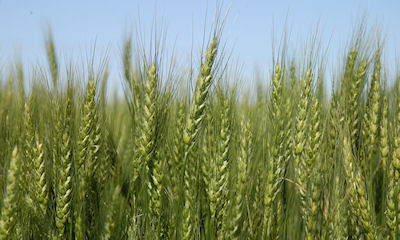June 25, 2015

There's a good chance that your wheat will be low in protein this year unless you do something about it.
The yield potential for wheat is currently high and – if you had lots of rain in May – you likely lost some of the nitrogen you had applied earlier, says Dave Franzen, North Dakota State University Extension soil specialists.
But you can increase wheat protein level by applying extra N. The big question is timing. When is the best time to apply it?

Do's and don'ts when trying to boost wheat protein
"My strongest recommendation for protein increase is to wait until immediately post-anthesis. This is the timing where the main stem and next two tiller anthers are 'done' (no longer yellow). Any other lurking tillers are of no yield consequence, so nuking anthers with N application is not an issue," Franzen says. "At this stage, apply 10 gallon per acre UAN (28-0-0) with 10 gallon per acre of water, apply during the cool of the day. During hot periods, this means morning between sunup and maybe 10 a.m. If it's in the 60s all day, keep going."
The application should be made with flat fan nozzles pointed downwards. Expect some leaf burn, but this has not resulted in yield decreases in NDSU research trials. In some of the trials, the leaves were badly burnt. Apparently, the N in the flag leaves was mobilized during heading so that immediately post-anthesis burning is not the issue it would have been earlier, Franzen says.
"You should expect from a 1/2 to 1 percentage point increase in protein with this application," he says.
If protein doesn't rise, it is most likely because sulfur was marginally deficient or disease interfered with protein accumulation, Franzen says.
"I would not mix ammonium thiosulfate with the immediate post-anthesis program. I would favor ammonium sulfate at a low rate (1-2 pounds S max) with the UAN if a grower decides to put on any S at all. Supplemental S should have been applied a couple weeks ago," he says.
Things NOT to do, according to Franzen:
Do not apply during heading. UAN or fertilizer of any kind will harm sensitive wheat flowers. Protein increase would be likely, but at the expense of yield.
Do not use low rates of slow-release N fertilizers. Some salespeople want growers to believe these products are more efficient than UAN so a much lower rate can be used, but all of our research indicates that applied as a foliar to wheat these materials are no more efficient than UAN.
Do not mix with fungicide at flag leaf. Fungicides are supposed to protect the flag leaf, and adding fertilizer will reduce the leaf surface and is counterproductive to this purpose.
Source: North Dakota Crop and Pest Report, June 18
You May Also Like




